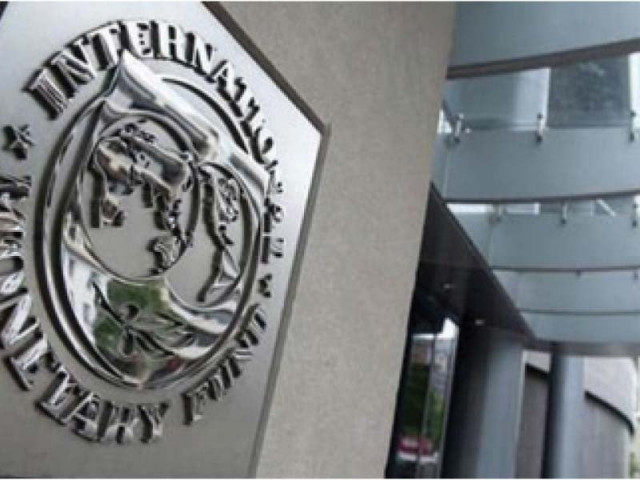IMF deal: a cornered federal govt
Brief period of relief may not end Pakistan’s long-term financial woes

The IMF mission has flown back after the much-hyped deliberations. Talks have been successful, as per the mission statement, but staff agreement will follow only after some prior actions, like new revenue measures, expenditure rationalisation and upward adjustments of power tariff.
Hence, we are ready to receive another tranche of $1.1 billion and a brief space to get short-term debt rescheduling, on relatively easier terms, to avert the looming international debt default. But the brief period of relief may not end our long-term financial woes.
If the recent past is an indicator, in all likelihood, we will be facing the same negotiations and economic uncertainty three months hence. The pessimism stems from Pakistan’s reluctance to address long-term structural issues and its inability to think about exorcising its demons from the past.
The pivot of IMF negotiations is the primary balance position. In easier terms, to qualify for start of IMF talks one needs to show that the government revenue is at least more than its expenditures, excluding the interest expense.
In the budget 2022-23, revenues were estimated at Rs5 trillion and non-interest expenditure was set at Rs5.5 trillion, ie a negative primary balance. Before the finalisation of budget, the government had revised it to almost equal numbers due to objections by the IMF.
However, by the time of current review, Pakistan had faced flood disaster, continued international petroleum and commodity super cycle and high domestic inflation. As a result, the half yearly balance sheet was again showing a negative primary balance and the numbers were likely to worsen.
The negotiations hence focused on plugging this gap; increasing revenue resources for the federal government and decreasing its expenditures. On expenditure side, the defence and civil employees-related expenses are likely to push north due to unprecedented inflation. The only viable option is to cut down subsidies and the financing of loss-making PSEs.
On the more complicated revenue side, largely due to the 18th Amendment and the 7th NFC award (in vogue since 2010), the federation only gets 42.5% out of FBR revenues (almost 40%, after payment to AJK, G-B and ex-Fata) and the share of provinces cannot be reduced from the present share (Article 160(3A) of the Constitution).
In the IMF agreement, it is always the federal government revenue number which is under discussion and not the FBR collection (60% of which goes to the provinces and territories).
To bridge the primary balance gap, the government has to levy almost Rs250 billion of FBR taxes in order to bridge a Rs100 billion gap of primary balance. Provinces gain another Rs150 billion in their revenues, which is mostly spent on enlarging the size and grandeur of provincial governments.
Hence, most of the interim revenue arrangements focus on non-divisible federal levies, which are inflationary and output-reducing taxes, rather than the economically correct income and consumption taxes in the divisible pool.
The prime minister and his cabinet, being elected by the whole country and presumably popular and competent leaders, naturally feel obliged to do something for the masses. And hence the federation enters into devolved subjects like social protection, commodity subsidies, provincial development projects, health and education.
They step in to provide affordable housing, reasonable cost of living, vaccines, cheap agricultural inputs and infrastructure projects, as their core responsibility.
After the 18th Amendment, none of these responsibilities are with the federal government, nor do they have any monetary resources to finance such activities. But the expectation of electorate drives the incumbent governments to intervene and deliver.
As a result, the federal government provided billions of rupees for subsidy on fertiliser manufacturing, import of sugar/ wheat/ fertiliser/ vaccines, social safety networks, utility stores, industry/ health/ education and infrastructure projects in provinces – none of which is their listed responsibility.
On urea fertiliser manufacturing alone, the current hidden subsidy cost of the federal government may run into trillions of rupees due to the difference between international price of gas and that charged from fertiliser plants.
The point in question is not withdrawal of subsidies but the constitutional arrangement of finances and responsibilities. The constitutional arrangement suggests that the federal government is only responsible for defence, highways, airports, ports, AJK, G-B, ICT and electricity and is also entrusted with regulatory functions of central banking/ currency, external debt, tax and tariff, import/ export, external affairs and corporates. Everything else and the corresponding financing resources are with provincial governments.
It is very obvious that the space provided by the federal list is quite small as compared to the fanfare, clout, expectations and political struggle related to the Prime Minister’s Office.
As a result, even after the 18th Amendment in 2010, the federal government tries to spend huge sums on subjects which are undoubtedly close to people’s heart but are beyond its financial and constitutional mandate.
This year, the divisible pool share of the federal government is around Rs3,000 billion, realistically we can add another Rs1,500 billion from non-tax revenues. In all, this Rs4,500 billion is barely enough to provide for defence expenditure, running of the federal government, pensions and Railways, PIA and power sector losses. The debt servicing of around Rs5.5 trillion is over and above this amount. This means that for primary balance to remain positive, the federal government has to stop spending on power sector subsidy, Benazir Income Support Programme (being a provincial subject), agricultural subsidies, commodity operations and development projects in provinces.
However, if the federal government only spends on defence, external affairs and debt servicing, it will lead to the perception that it is only taking the unpopular steps; taxes, raising interest rates, letting dollar float on its own, increasing power tariffs, increasing petroleum/ gas prices, shutting down PIA, firing steel mill employees, reducing railway operations and reducing federal government jobs. This will hit its popularity.
The current vertical power sharing and financial allocation, between the federation and provinces, is highly skewed. It has led to a bankrupt federation with all the responsibilities, with huge public expectations but truncated finances and administrative sphere and at the same time, liquidity-flushed provinces with almost zero responsibility in the eyes of electorate.
This dilemma is the root cause of reluctance of all federal governments, dealing with the IMF in past 12 years, and will keep haunting us, unless the perceived responsibility and expectations from the federal government are drastically reduced in the eyes of public or the governance structure goes back to the pre-2010 vertical power and finance sharing formula.
The writer is Revenue Lead, Revenue Mobilisation, Investment and Trade Programme (ReMIT), ex-member policy FBR and ex-additional secretary, Ministry of Industries and Production
Published in The Express Tribune, February 20th, 2023.
Like Business on Facebook, follow @TribuneBiz on Twitter to stay informed and join in the conversation.



















COMMENTS
Comments are moderated and generally will be posted if they are on-topic and not abusive.
For more information, please see our Comments FAQ